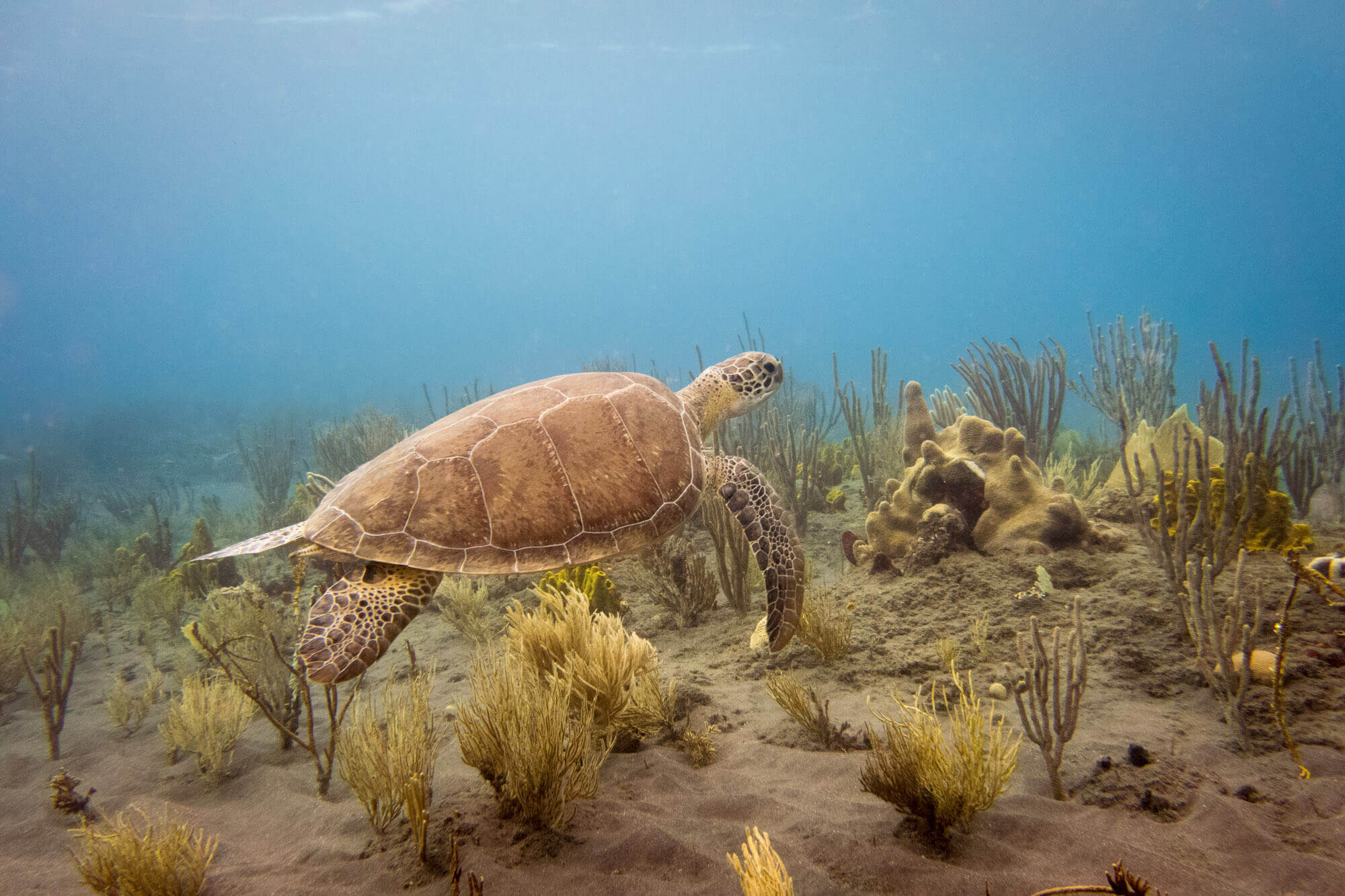Our first scuba vacation
With our relatively fresh PADI Advanced Open Water and Nitrox certifications, the next step was to take advantage of our hard work and get some dives under our belt. Sort of by accident, we ended up scuba diving in Saba and St. Kitts.

We nearly ended up in Cozumel when Air Canada Vacations messed around with our departure dates and flight, and we decided to cancel. That same day we stumbled upon an irresistible deal with Explorer Ventures and booked immediately.

We would be spending a week on a boat in the middle of the Caribbean sea, not touching land again until we returned. We would spend 3 days diving off Saba and another 3 days off St. Kitts. On most days we’d be doing 5 dives: 2 dives in the morning, 2 dives in the afternoon and a night dive. The only exceptions were the day we made the crossing from Saba to St. Kitts (no night dive) and the final day in St. Kitts (only 2 morning dives). In total, we’d clock 25 dives.
We flew into St. Maarten, though we wouldn’t do any diving off this island. We were greeted by a shuttle driver who would take us to the marina where the boat crew would load our bags onto the boat. For the first time in my life, we had a bag (of scuba gear) that didn’t make it off the plane. It turns out it was loaded onto a later flight to the island, and our driver was kind enough to pick it up on his next trip to the airport to pick up guests later that afternoon. Crisis averted. (Another guest’s bags would arrive until the next day and arrangements were made for the bags to be flown to Saba and meet us on the boat.)
That first afternoon was all about getting used to the board and preparing ourselves for the week ahead. We claimed a spot on the dive deck for our equipment. You set up your BC and regulator on your tank once and never touch them again (except for diving). The tanks are filled on the spot between dives, so you don’t remove your BC from the tank until you pack to leave. That convenience will make you never want to land-dive again.
If you dive with nitrox, that’s available for a small surcharge. They had some 100 cubic foot tanks that we chose to dive with, since we were new divers and hadn’t mastered good air consumption yet.
After having a lovely dinner the first evening, we set off on a 3-hour crossing from St. Maarten to Saba. We were going at a decent clip, and being prone to sea sickness, my entire dinner found its way back into the sea. But I had a great night’s sleep and woke up ready for diving. (After day 3, we had a second crossing from Saba to St. Kitts, and not learning from the first time, I had a big dinner and lost it all again.)
Every day has essentially the same routine: Wake up, eat a warm breakfast, dive #1, eat a fresh-baked snack, dive #2, eat lunch, dive #3, snack, dive #4, dinner, (night) dive #5, nightcap, sleep. Repeat.
Each dive is preceded by a thorough briefing of the site and what to expect and look for. You have the choice to follow a divemaster or do your own thing (unlike a lot of land-based dive operators that require you stay with the group). We generally found following the divemaster was beneficial because they knew where the good sea life was hiding, or generally had sharper eyes than us newbies for spotting the small critters. But every now and then, we’d go off on our own (careful to know how to get back to the boat) and be rewarded by finding a reef shark or sea turtle and getting to have it all to ourselves.
We had an amazing week on the boat, and as new divers, we gained an incredible amount of experience in a short time. Multiple dives in such quick succession allows you to learn something on one dive and apply it on the next. I wouldn’t necessarily recommend this for all new divers (it’s intense!) but for us, it was the best thing we could do.














Leave a Reply